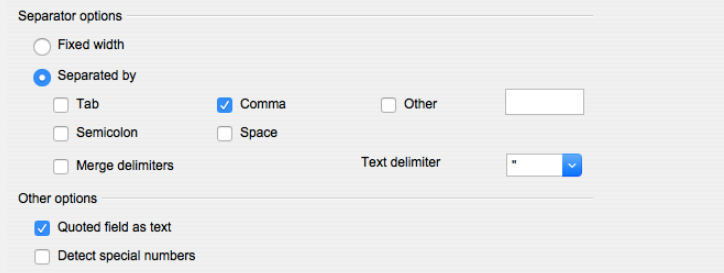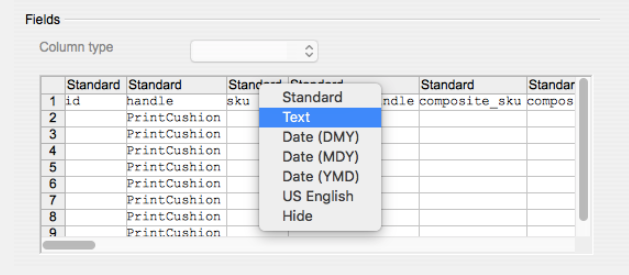If your organization uses a SKU format which is either long digit numbers, or numbers with a leading 0, your SKUs could be truncated when you export your Retail POS products to a CSV. Once your SKU numbers become truncated, there is no way to undo it. If this happens, you would have to start from scratch with a new CSV file.
You can avoid SKU truncating by exporting products as an XLSX file. See our article on exporting your product list to learn more.
If you want to work with CSV, you can edit your CSV files using OpenOffice. OpenOffice is a spreadsheet application that can be downloaded for free.
OpenOffice gives you the option to format CSV files before you open them allowing you to set the correct formatting before you even start working on your CSV file. This ensures your SKU numbers don’t become truncated and that your SKUs don’t lose any leading zeros they may contain.
We recommend that you use OpenOffice instead of Excel or another spreadsheet application when working with CSV files (especially with products or customers) because the formatting works better with Retail POS. However, if you are using Excel, check out this article.
Formatting your CSV file
Before you can edit your CSV file in OpenOffice, you will get a pop-up window showing you options on how to format your CSV file.
Below is an outline of how to correctly format your CSV file.
1. Set the Character Set section to Unicode (UTF-8).

2. Under Separator Options, it is really important that the file is set to Separated by and Comma and " under the Text delimiter section. This is because that is what a CSV file is, a spreadsheet displayed as comma separated values.

3. Next, right click on the SKU column and set to Text. This is what is going to stop truncations and loss of leading zeros. You may also click on the Standard column where your SKUs sit and adjust it to Text.

4. Once you have set up how to format your CSV file, you can now go ahead and edit your CSV file correctly.
For more information on using a CSV file, check out this article.